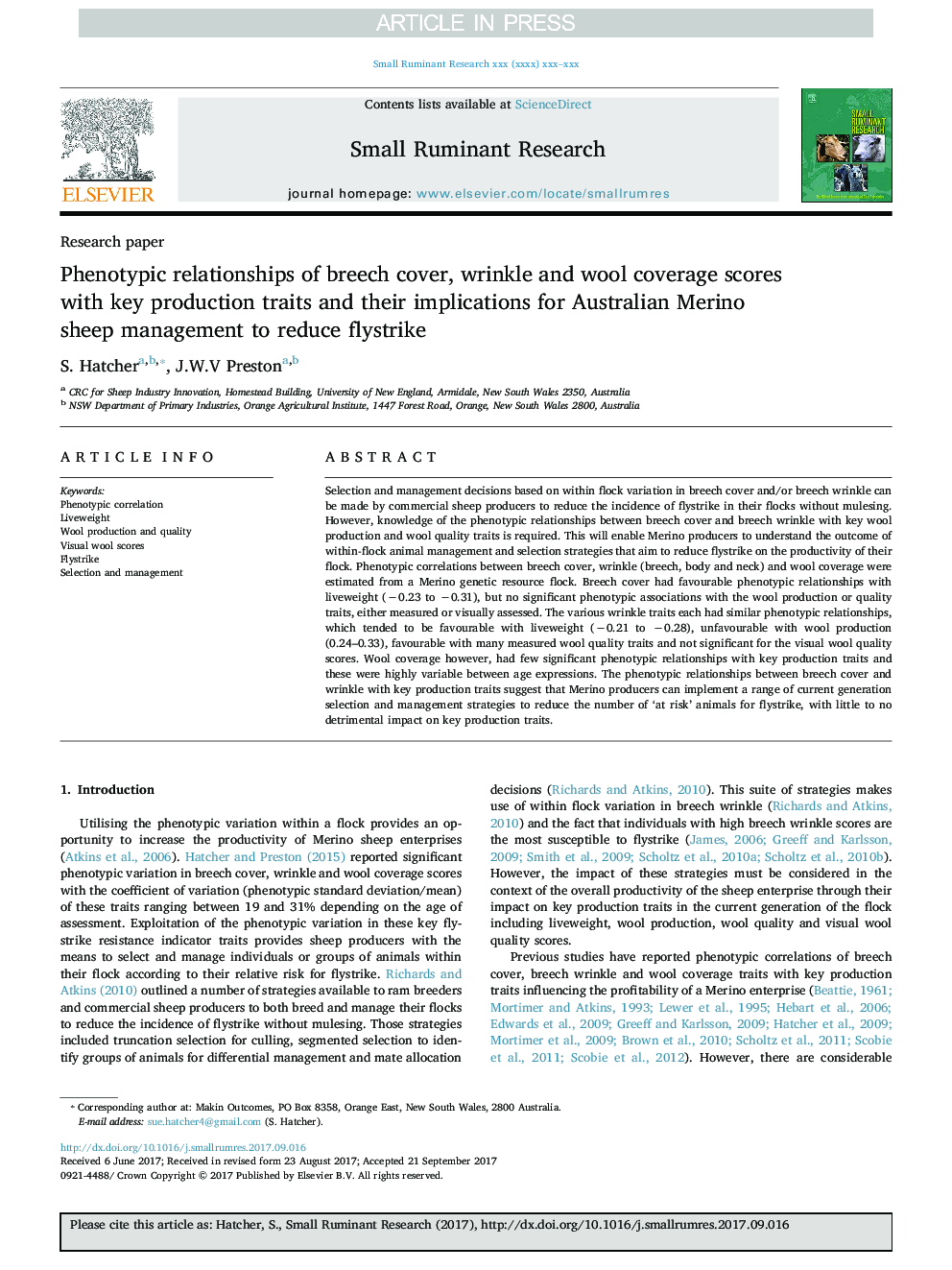| کد مقاله | کد نشریه | سال انتشار | مقاله انگلیسی | نسخه تمام متن |
|---|---|---|---|---|
| 8504363 | 1554335 | 2017 | 7 صفحه PDF | دانلود رایگان |
عنوان انگلیسی مقاله ISI
Phenotypic relationships of breech cover, wrinkle and wool coverage scores with key production traits and their implications for Australian Merino sheep management to reduce flystrike
ترجمه فارسی عنوان
روابط فنوتیکی پوشش شکم، چروک و پوشش پشم با صفات تولید کلیدی و پیامدهای آنها برای مدیریت گوسفند ماریوآلای استرالیا برای کاهش تردد هوایی
دانلود مقاله + سفارش ترجمه
دانلود مقاله ISI انگلیسی
رایگان برای ایرانیان
موضوعات مرتبط
علوم زیستی و بیوفناوری
علوم کشاورزی و بیولوژیک
علوم دامی و جانورشناسی
چکیده انگلیسی
Selection and management decisions based on within flock variation in breech cover and/or breech wrinkle can be made by commercial sheep producers to reduce the incidence of flystrike in their flocks without mulesing. However, knowledge of the phenotypic relationships between breech cover and breech wrinkle with key wool production and wool quality traits is required. This will enable Merino producers to understand the outcome of within-flock animal management and selection strategies that aim to reduce flystrike on the productivity of their flock. Phenotypic correlations between breech cover, wrinkle (breech, body and neck) and wool coverage were estimated from a Merino genetic resource flock. Breech cover had favourable phenotypic relationships with liveweight (â0.23 to â0.31), but no significant phenotypic associations with the wool production or quality traits, either measured or visually assessed. The various wrinkle traits each had similar phenotypic relationships, which tended to be favourable with liveweight (â0.21 to â0.28), unfavourable with wool production (0.24-0.33), favourable with many measured wool quality traits and not significant for the visual wool quality scores. Wool coverage however, had few significant phenotypic relationships with key production traits and these were highly variable between age expressions. The phenotypic relationships between breech cover and wrinkle with key production traits suggest that Merino producers can implement a range of current generation selection and management strategies to reduce the number of 'at risk' animals for flystrike, with little to no detrimental impact on key production traits.
ناشر
Database: Elsevier - ScienceDirect (ساینس دایرکت)
Journal: Small Ruminant Research - Volume 157, December 2017, Pages 47-53
Journal: Small Ruminant Research - Volume 157, December 2017, Pages 47-53
نویسندگان
S. Hatcher, J.W.V Preston,
